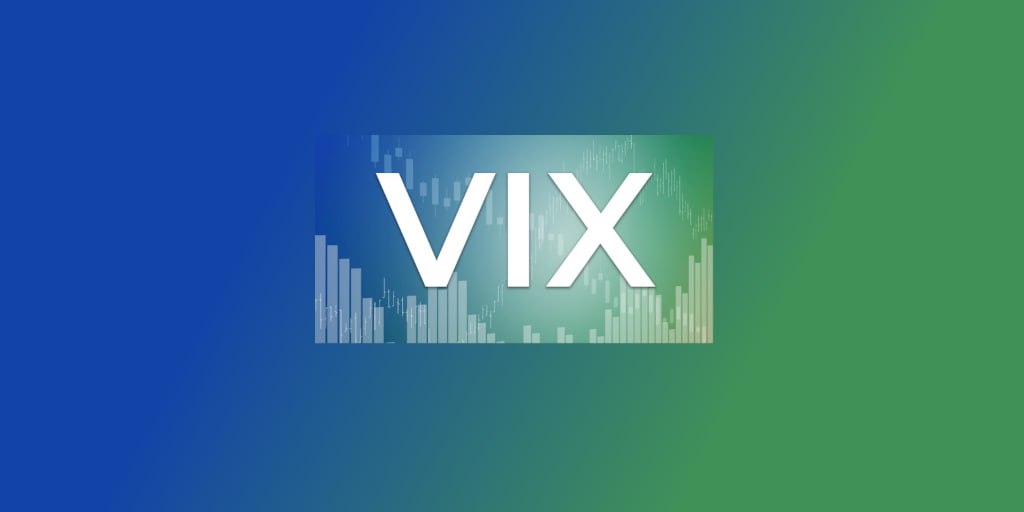The VIX, or Chicago Board Options Exchange Volatility Index, serves as a metric assessing the anticipated volatility among investors in the U.S. stock market. Instead of indicating current or recent stock volatility, it functions as a forward-looking indicator, gauging the expected level of volatility in the stock market.
Referred to as the “fear gauge” or “fear index,” the CBOE VIX, established by the Chicago Board Options Exchange (CBOE) in 1993, quantifies the expected fluctuations investors anticipate in the S&P 500 index over the upcoming 30 days. A low VIX suggests subdued expectations for short-term price swings, while a surge in the VIX signals an anticipation of heightened volatility in the stock market.
While we won’t delve into the intricate mathematics behind the CBOE VIX formula, a basic grasp of options trading proves helpful in comprehending its functionality. When investors acquire options, they essentially purchase the right (without the obligation) to buy or sell a stock at a predetermined date and price.
Many traders employ options for hedging purposes, treating them as a type of insurance, particularly in times of uncertainty. Elevated options prices across the broader stock market indicate an expected increase in volatility.
The VIX computation involves averaging weighted real-time call and put prices spanning the S&P 500 index, with an expiration date ranging from 23 to 37 days out. The outcome provides the implied 30-day volatility of the S&P 500 index.
Given that the S&P 500 represents approximately 80% of the total value of U.S. stocks, the VIX serves as a metric for gauging uncertainty in the overall U.S. stock market.
Examples of How Investors Use the Volatility Index (^VIX)
Directly investing in the VIX or any other market index is not feasible. The complexity arises from the fact that traditional market indexes like the S&P 500 offer index funds that replicate the benchmark index’s performance. When you acquire an S&P 500 index fund, you’re essentially gaining exposure to a portfolio containing the 500 stocks listed in the index.
However, obtaining a basket of securities that mirrors the VIX is unattainable. Instead, investors can consider purchasing futures contracts, exchange-traded funds (ETFs), or exchange-traded notes tied to these futures contracts in an attempt to mimic the VIX’s behavior.
Given that the volatility index tends to rise when the S&P 500 falls, investors may opt for this approach if they hold a bearish outlook on the stock market. Alternatively, investors might take a position in a VIX-related product for reasons such as portfolio diversification or as part of a hedging strategy.
It’s important to note that VIX-tracking funds are commonly utilized by day traders and come with a notably high level of risk. In contrast, a buy-and-hold investment strategy typically produces more favorable outcomes. While the VIX can assist in predicting short-term market performance, the associated fluctuations should not overly concern long-term investors.
Top VIX ETFs for Q4 2023 You Should Know
In the following analysis, we examine the top three VIX ETFs that exhibited the strongest performance during the last quarter of 2023, considering their returns over the preceding year. The figures provided for each ETF are current as of September 25th.
iPath Series B S&P 500 VIX Mid-Term Futures ETN (VXZ)
VXZ takes the form of an exchange-traded note (ETN), categorized as an unsecured debt security with stock-like characteristics and no interest payments. This financial instrument follows the S&P 500 VIX Mid-Term Futures Index Total Return, maintaining a daily rolling long position in VIX futures contracts for the fourth, fifth, sixth, and seventh months.
The index reflects the collective outlook of market participants regarding the future performance of the VIX. VXZ, comprising longer-dated futures contracts, is designed to exhibit less correlation with the spot VIX. Despite this characteristic, most investors typically engage in short-term trading of VXZ to mitigate tracking errors.
ProShares VIX Mid-Term Futures ETF (VIXM)
VIXM is structured in the form of a commodity pool, a private investment vehicle that combines contributions from investors to engage in trading commodities futures and options. This fund is designed to mirror the performance of the S&P 500 VIX Mid-Term Futures Index, which gauges the returns generated by a portfolio of monthly VIX futures contracts with a weighted average of five months until expiration.
The fund generates returns based on the anticipated increase in the volatility of the S&P 500. It’s important to note that VIXM does not directly track the VIX itself, and its performance is expected to differ significantly from that of the VIX index. Similar to other funds related to volatility, VIXM should be considered a sophisticated investment vehicle suitable for experienced traders who plan to hold the fund for a short duration.
iPath Series B S&P 500 VIX Short-Term Futures ETN (VXX)
Similar to VXZ mentioned earlier, VXX is structured as an Exchange-Traded Note (ETN). VXX follows the S&P 500 VIX Short-Term Futures Index Total Return, mirroring the benchmark index for VXZ. However, a crucial distinction lies in this index providing exposure to first- and second-month VIX futures contracts.
Contrary to offering a direct investment in the VIX, VXX, much like the other funds in this category, concentrates on short-term futures contracts. This approach results in a closer correlation to the specified index, but it also entails an elevated risk of contango. Consequently, VXX is better suited for experienced and seasoned investors.
Disclaimer: This website provides information about cryptocurrency and stock market investments. This website does not provide investment advice and should not be used as a replacement for investment advice from a qualified professional. This website is for educational and informational purposes only. The owner of this website is not a registered investment advisor and does not offer investment advice. You, the reader / viewer, bear responsibility for your own investment decisions and should seek the advice of a qualified securities professional before making any investment.

